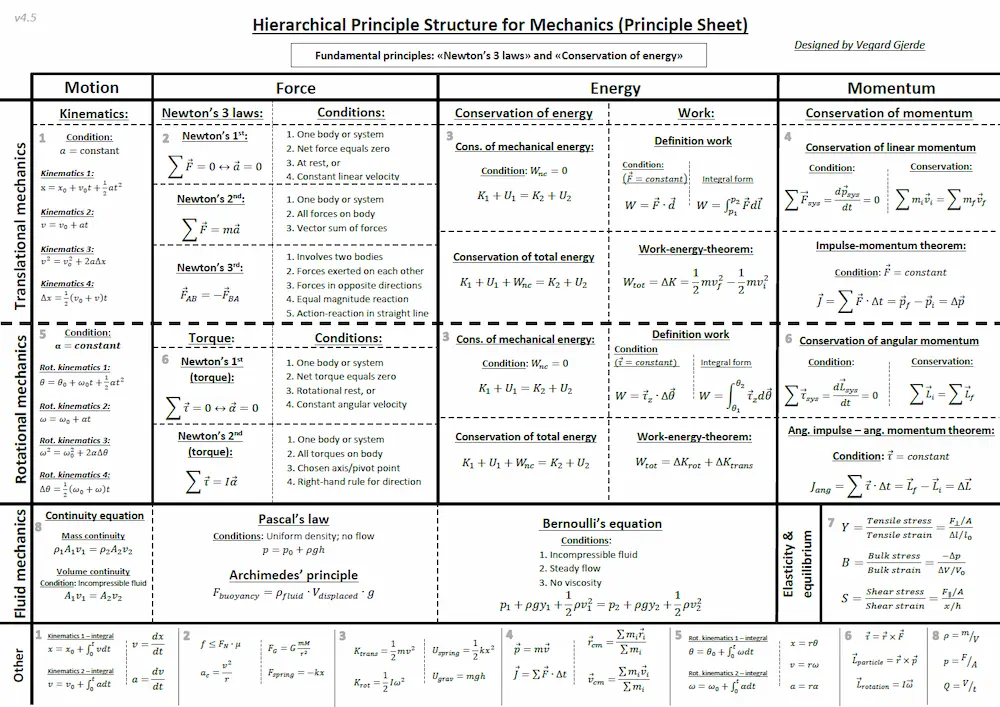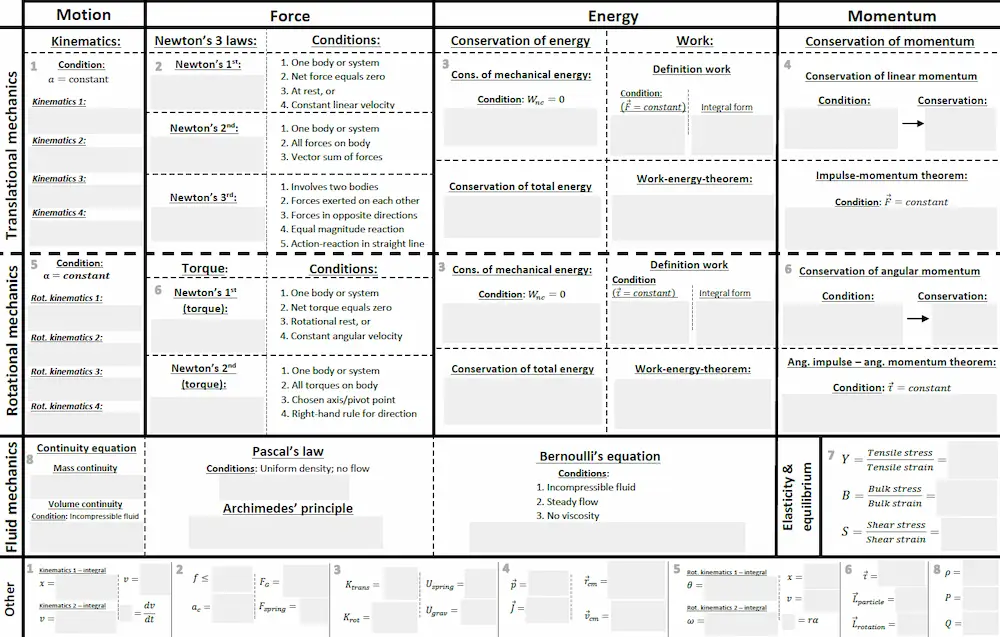Principle Structures: Building Mental Frameworks
When learning complex subjects, isolated facts quickly become overwhelming. The key to mastery lies in organizing knowledge into powerful mental frameworks called principle structures.
What Are Principle Structures?
A principle structure is a hierarchical organization of principles that connects fundamental concepts to their conditions, definitions, and applications.
They serve as both:
- A knowledge map – showing how principles relate and cluster.
- A retrieval tool – letting you test recall in a structured, position-anchored format.
Why they work:
- Position as a cue – The fixed location of each principle in the structure becomes a retrieval cue, reinforcing both visual and verbal memory.
- Clustering – Related principles appear together, helping you categorize and recall them by theme.
- Meaningful associations – You link each principle to conditions of use, definitions, and applications—powerful cues during problem solving.
Example: Physics Principle Structure
Here’s an example from introductory mechanics:

This format:
- Groups related laws (e.g., Newton’s laws, conservation principles).
- Specifies conditions for applying each principle.
- Lists mathematical forms alongside names.
- Uses a consistent layout so position itself helps recall.
Turning Structures into Retrieval Sheets
A principle structure can be adapted into a retrieval sheet for practice:
- Start with the complete structure.
- Create a version where key items are blank.
- Retrieve the missing elements from memory before checking.

You can print these or use them on a tablet with a stylus.
This method combines elaborative encoding (by understanding how principles fit together) and retrieval practice (by forcing recall).
Building Your Own Principle Structure
If you don’t have a ready-made structure:
- List all essential principles – Start from course notes, textbook summaries, or past exams.
- Group by theme – E.g., in mechanics: translational motion, rotational motion, energy, momentum.
- Add conditions and key formulas – These make recall more effective than just listing names.
- Arrange hierarchically – Place the most general principles at the top, specialized forms below.
- Keep refining – Each study cycle can reveal better groupings.
This process itself is an act of learning—it forces you to think about what belongs where and why.
Avoid Rote Mnemonics
Techniques like memory palaces or absurd imagery are designed for meaningless sequences (e.g., card order, random numbers).
For meaningful content like physics principles, these methods can:
- Be irrelevant in problem solving.
- Fail as cues under exam conditions.
- Even interfere with long-term retention.
Principle structures give you the same spatial anchoring advantage, but with meaningful, directly usable cues.
Integrated With Other Learning Strategies
- Use principle structures while self-explaining worked examples.
- When solving problems, try recalling principles first, only consulting the sheet when you’re stuck.
- Drop retrieval practice for a principle once you can consistently solve problems that use it without looking it up.
As a Study Kickstart
Many students find it hard to start a study session.
Doing 10–15 minutes of retrieval on a principle sheet:
- Activates domain-specific brain networks.
- Suppresses unrelated thoughts.
- Makes it easier to enter a flow state.
Continue Learning
Master systematic problem solving: Our guide on the Five-Step Strategy shows you how to apply principle structures within a complete problem-solving framework.
Go deeper: The complete system—including printable retrieval sheets and spaced practice integration—is in Masterful Learning.
Research Basis
This principle structure and retrieval sheet approach was developed and tested in university physics courses, as published in:
-
Gjerde et al. (2020). Retrieval practice of a hierarchical principle structure in university introductory physics: Making stronger students. DOI: 10.1103/PhysRevPhysEducRes.16.013103
-
Gjerde et al. (2021). Integrating effective learning strategies in basic physics lectures: A thematic analysis. DOI: 10.1103/PhysRevPhysEducRes.17.010124
-
Gjerde et al. (2025). Mandatory retrieval test to incentivize retrieval practice of physics principles. DOI: 10.1103/PhysRevPhysEducRes.21.010119
Ready to apply this strategy?
Join Unisium and start implementing these evidence-based learning techniques.
Start Learning with Unisium Read More GuidesWant the complete framework? This guide is from Masterful Learning.
Learn about the book →